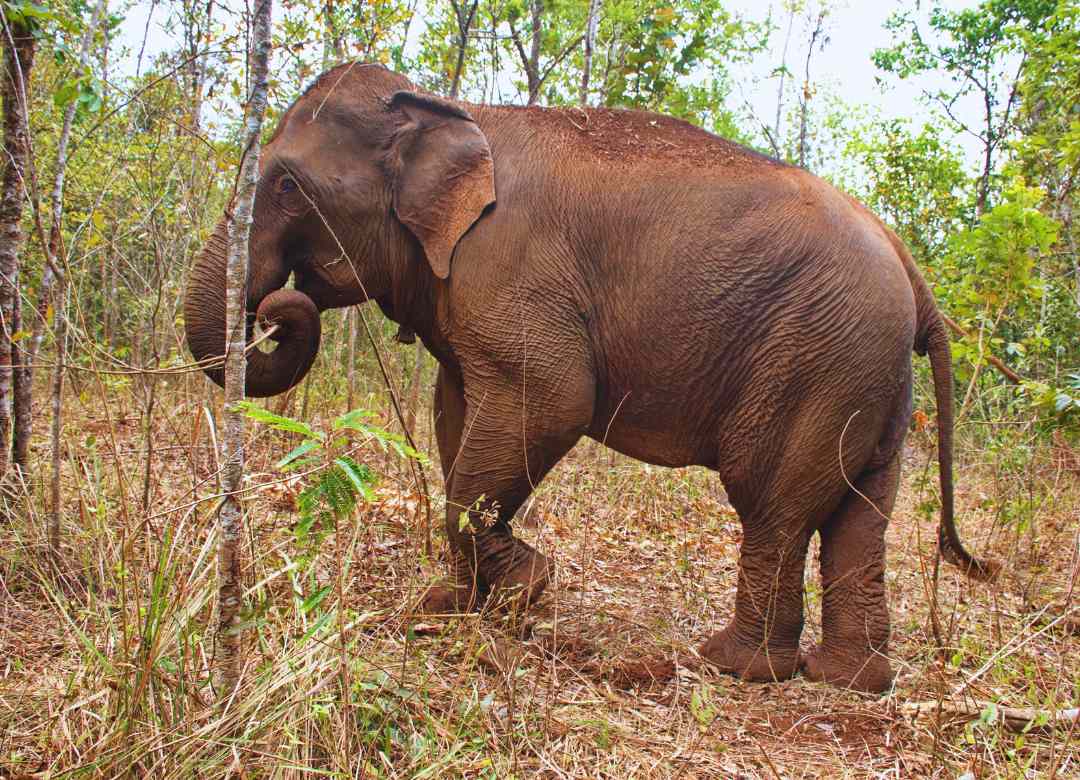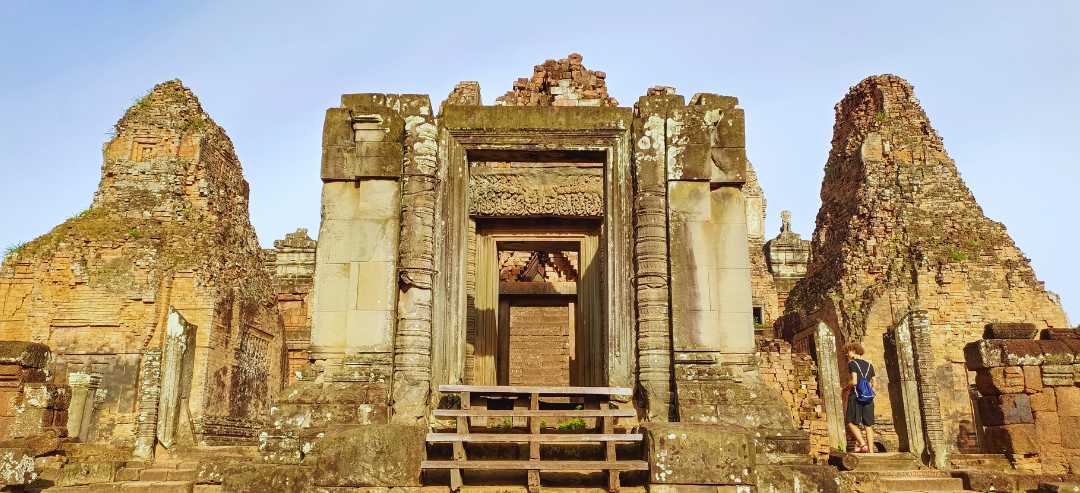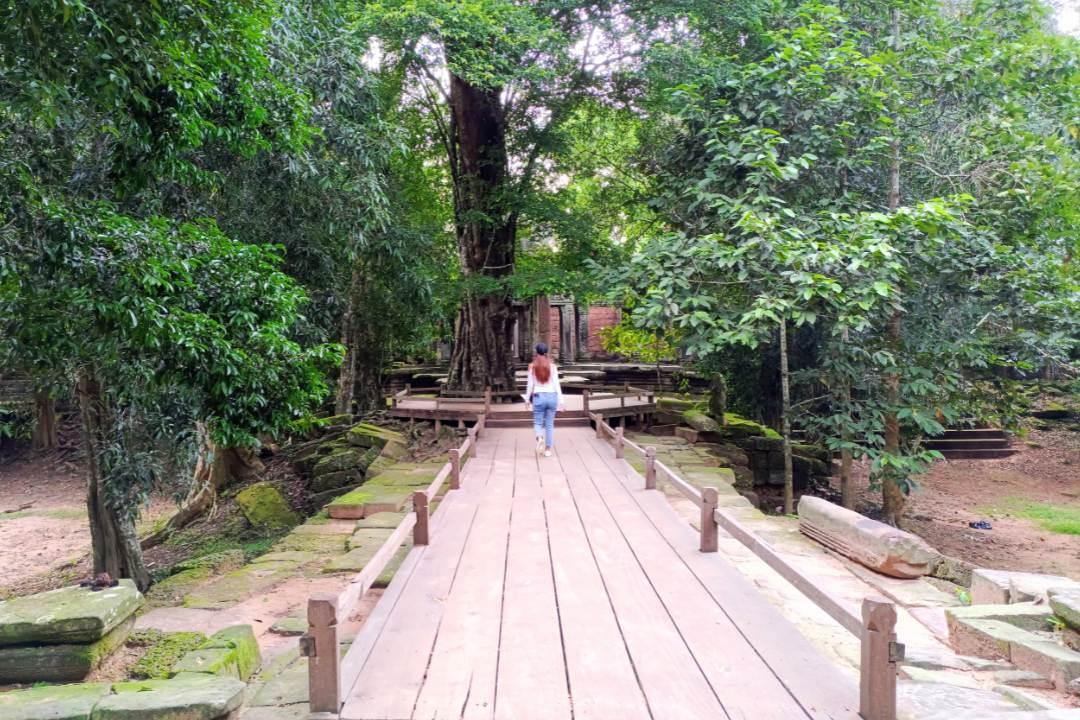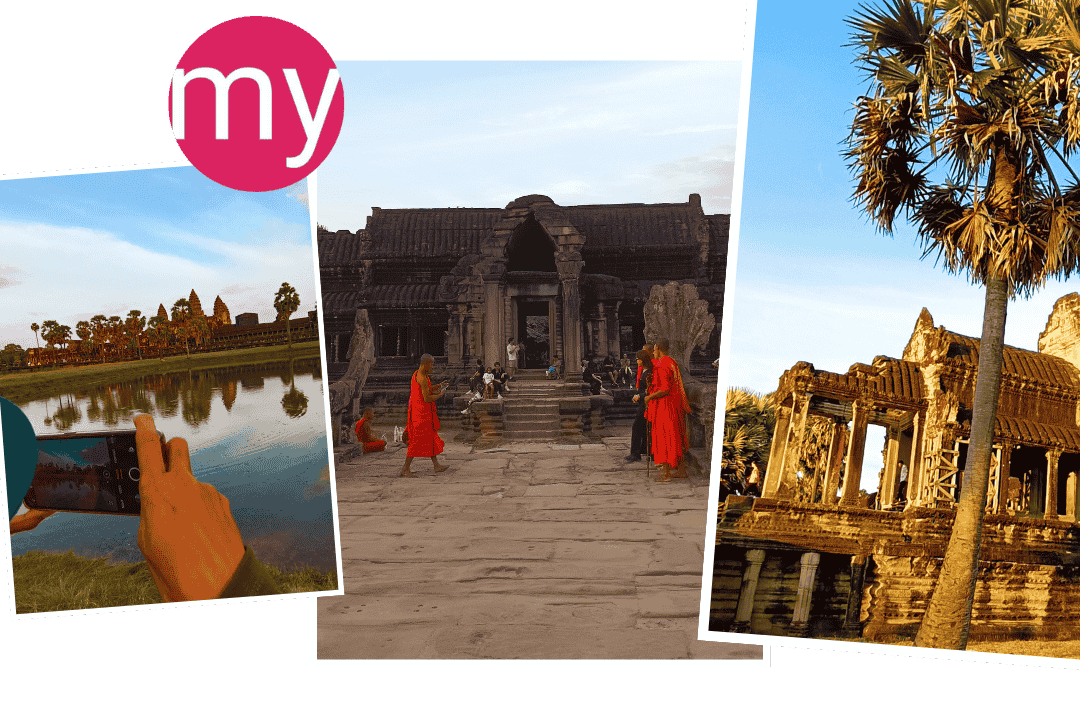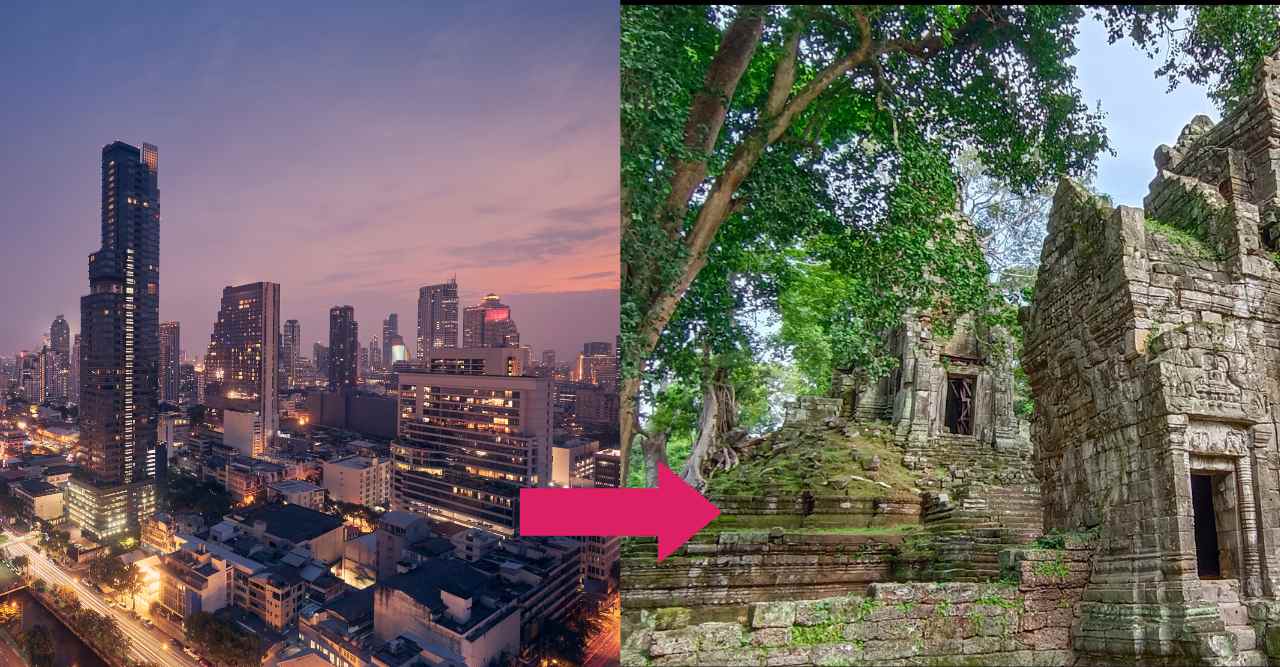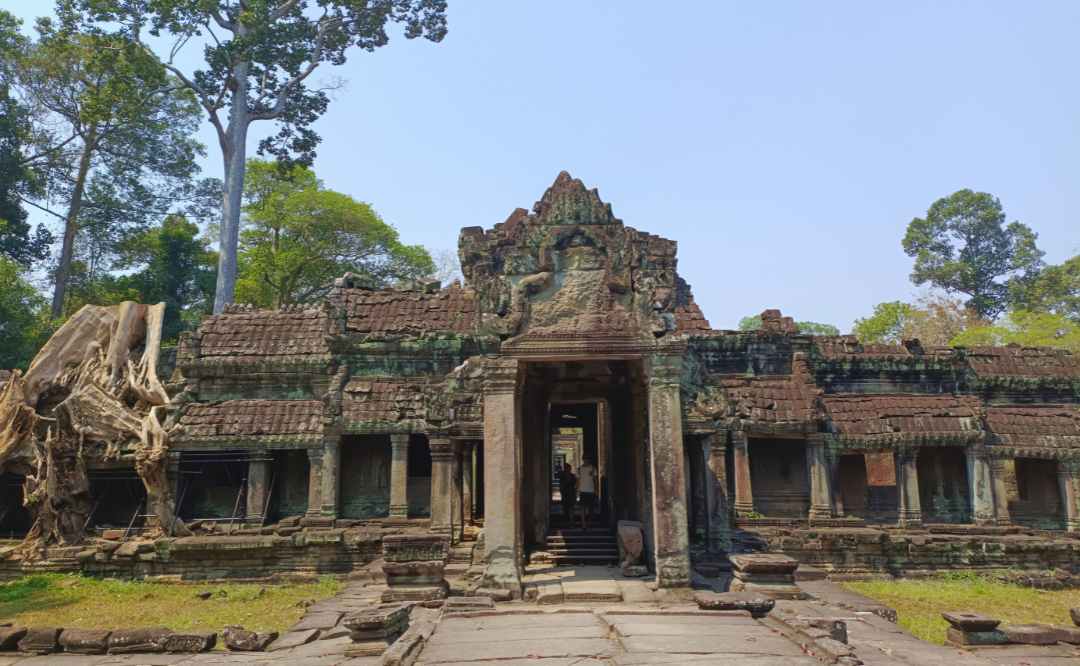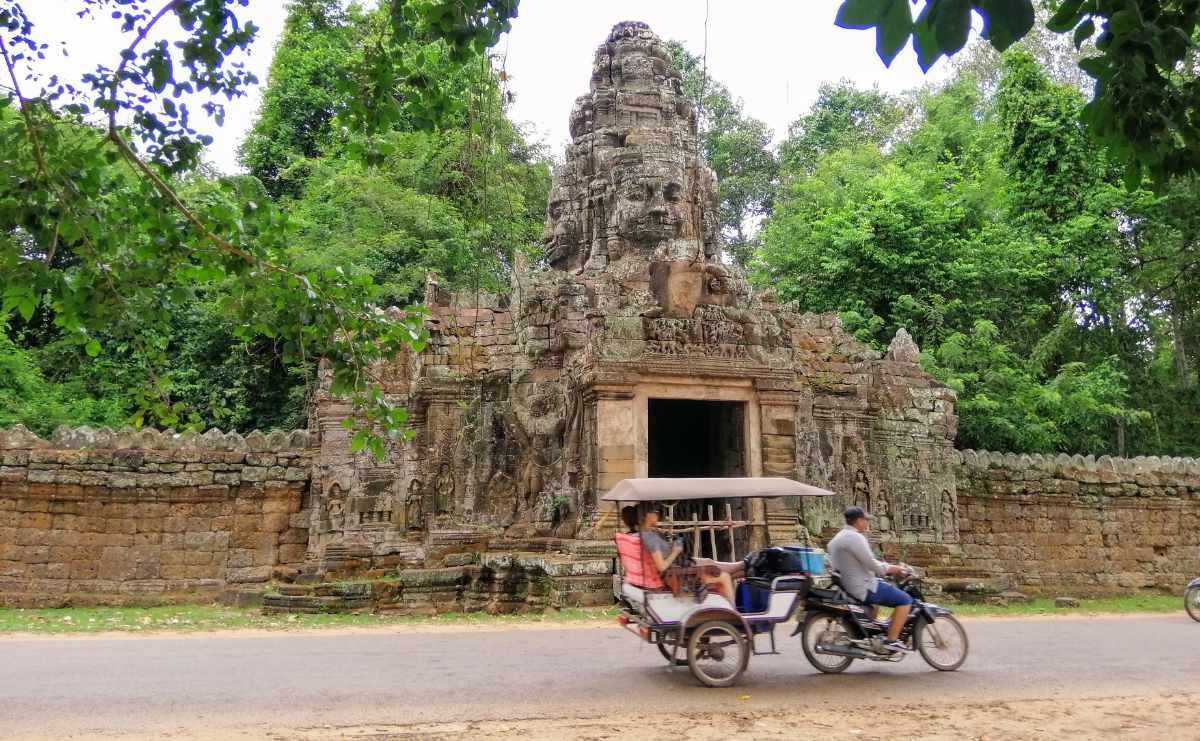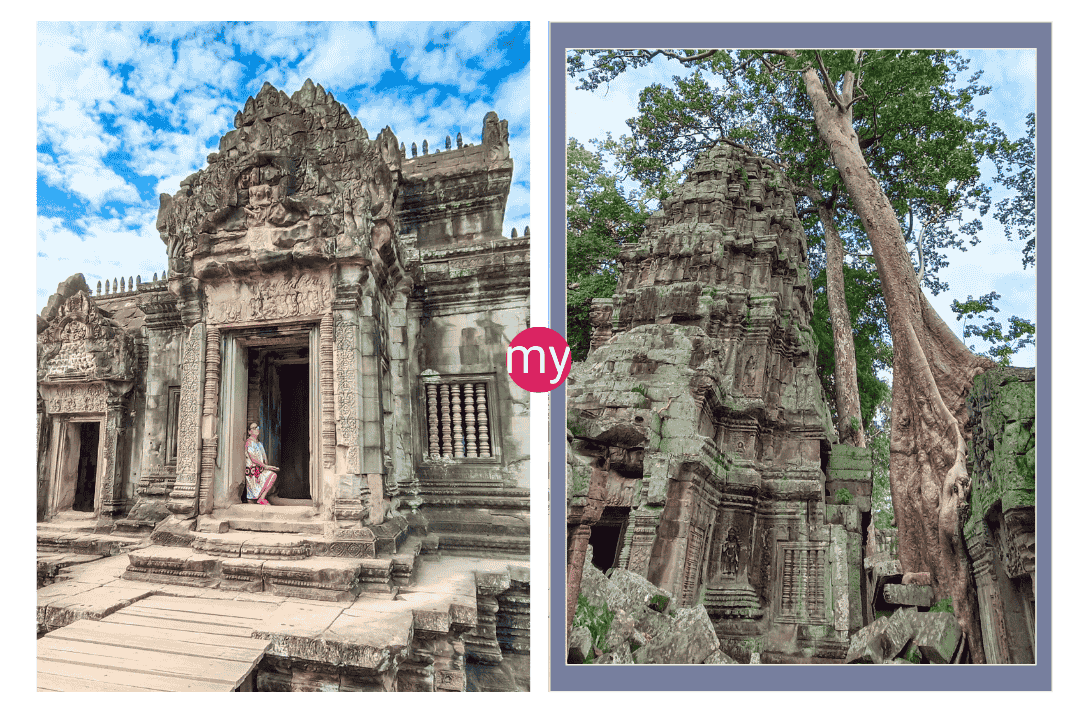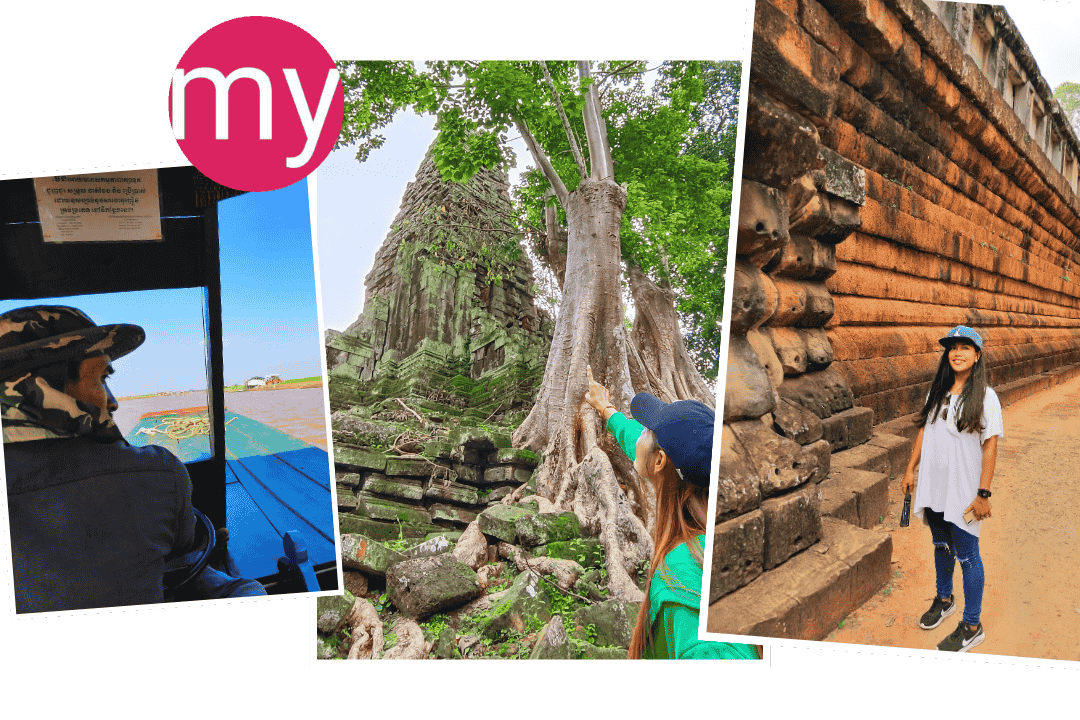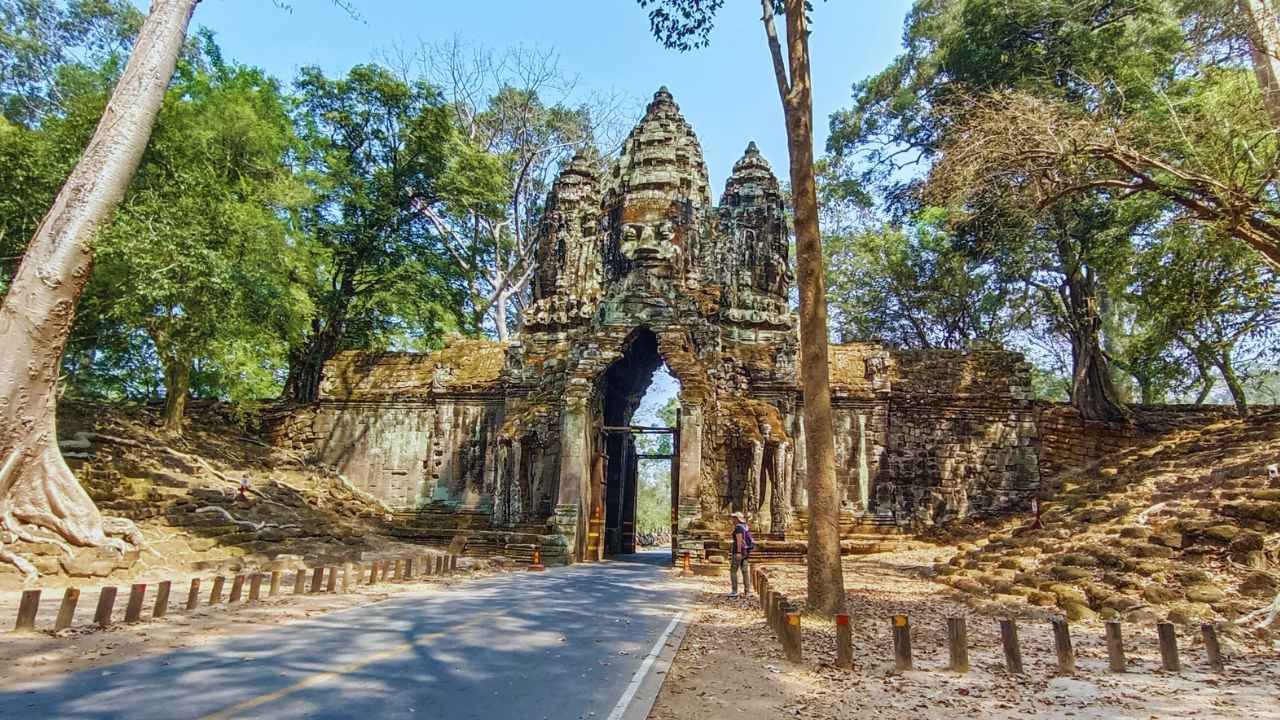The Temple They Don't Want You to Climb - Why Baksei Chamkrong is Cambodia's Most Intriguing Sacred Secret
Baksei Chamkrong Temple stands as one of Angkor's most mysterious monuments, where climbing the ancient stairs is forbidden but the view from the top reveals secrets that most visitors never see.
This 10th-century pyramid temple offers unique carvings, incredible sunrise views, and fascinating history that makes it worth the challenging climb. The temple’s restricted access has only made it more appealing to adventurous travelers seeking authentic experiences.

What Makes Baksei Chamkrong Temple Special
Baksei Chamkrong Temple is a 10th-century Hindu temple dedicated to Lord Shiva, located in Cambodia’s Angkor Archaeological Park. Built during the reign of King Rajendravarman II around 948 CE, this stepped pyramid stands 15 meters tall with a 27-meter square base, making it one of Angkor’s smallest but most intriguing temples.
The temple is famous for its restricted interior access and challenging stairs that create safety concerns for visitors. Key features that make this site special include:
- Unique “eyes and smiles” carvings that create mystical facial expressions on the walls
- Exceptional sandstone reliefs showing Indra standing on the three-headed elephant Airavata
- Strategic location near major temples like Angkor Thom and Phnom Bakheng
- Early architectural significance as one of the first durable-material temples at Angkor
The temple attracts photographers and history lovers who want to experience Cambodia’s Khmer Empire heritage beyond the crowded main temples. Its compact size and mysterious atmosphere make it perfect for those seeking a more intimate temple experience.
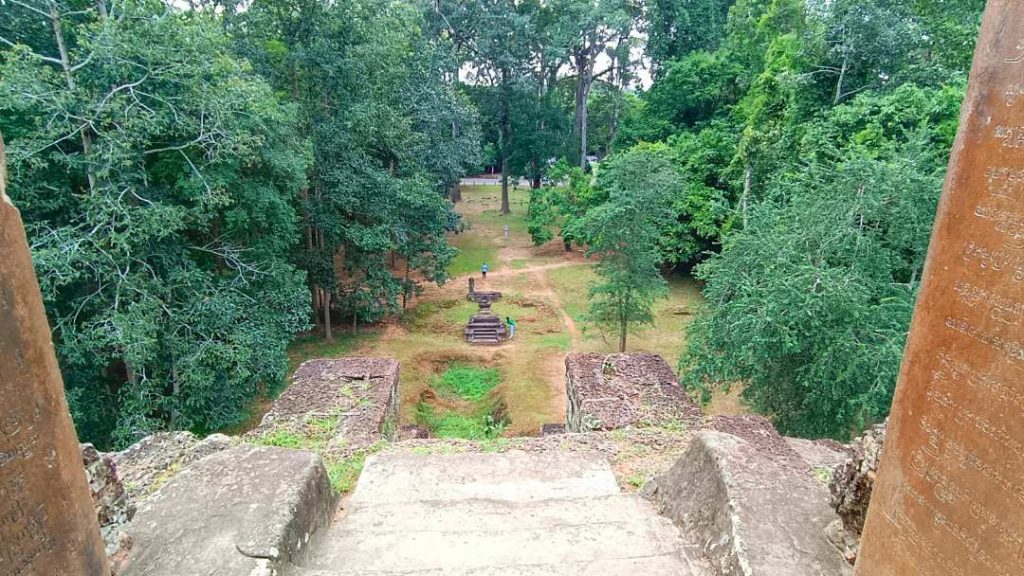
Key Takeaways About Baksei Chamkrong Temple
1. Ancient Construction Makes Modern Access Dangerous
The Baksei Chamkrong Temple stairs were built over 1,000 years ago with step risers averaging 35cm height – much steeper than safe modern standards. These weathered stone steps have rounded edges that make climbing slippery and risky. The narrow width and steep angle create genuine safety concerns that led to current access restrictions. Many visitors still attempt the climb for photos, but the 40% elevation gradient exceeds recommended climbing guidelines.
2. Hidden Buddhist Elements Mix with Hindu Origins
While Baksei Chamkrong Temple was originally built as a Hindu temple for Lord Shiva, later Buddhist additions created a unique religious mix. A hidden reclining Buddha image was added during the temple’s Buddhist period, showing how Cambodian religious practices evolved. The main sandstone carvings still show Hindu god Indra on Airavata, but careful observers can spot Buddhist influences throughout the structure. This religious layering makes the temple fascinating for understanding Khmer Empire spiritual development.
3. Strategic Location Creates Perfect Temple-Hopping Opportunities
Located between Angkor Thom and Phnom Bakheng, Baksei Chamkrong Temple sits in an ideal spot for multi-temple visits. The Pre Rup Sunrise tour includes this temple as part of a comprehensive day that covers Pre Rup Temple, Banteay Kdei Temple, Angkor Wat, Phnom Bakheng Temple, and Baksei Chamkrong Temple. Smart visitors use this temple as a quiet break between busier sites. Its compact size means you can explore it thoroughly in 30-45 minutes before moving to larger temples.
4. Sunrise and Sunset Views Rival Famous Viewpoints
The temple’s eastern orientation makes it perfect for sunrise photography, while its pyramid structure provides elevated views across the jungle canopy. Many photographers prefer Baksei Chamkrong Temple over crowded Phnom Bakheng for sunset shots because of fewer people and better angles. The temple’s “eyes and smiles” carvings catch dramatic lighting during golden hour. Professional travel photographers often include this temple in their Angkor itineraries specifically for these unique lighting opportunities.
5. Conservation Efforts Show Real Impact of Tourism
Recent studies show that unauthorized climbing has created measurable damage to the 10th-century temple structure. Surface contact from visitors causes accelerated erosion – touched areas deteriorate at 1.2mm per year versus 0.3mm annually in protected sections. APSARA Authority implemented a $1.2 million stabilization project in 2026 after thermal imaging revealed new stress fractures. The northwest corner now shows concerning load levels that could lead to partial collapse without intervention.

The Complete Guide to Visiting Baksei Chamkrong Temple
Getting There: Location and Access
Baksei Chamkrong Temple sits about 150 meters northeast of Phnom Bakheng in Siem Reap’s Angkor Archaeological Park. You can reach it by tuk-tuk, bicycle, or private vehicle as part of your Angkor temple pass. Most visitors combine it with other temples since its small size makes it perfect for quick stops.
The temple operates from 7:30 AM to 5:30 PM daily, and you’ll need a valid Angkor pass from Angkor Enterprise to enter. The standard one-day pass costs $37, while longer passes offer better value for multiple-day temple exploration.
What to Expect: Architecture and Design
The Prasat Baksei Chamkrong follows classic Khmer architecture with its stepped pyramid design. The brick sanctuary sits on top of four tiers, each smaller than the one below. This creates the illusion of greater height despite the temple’s compact 15-meter total elevation.
You’ll notice the intricate sandstone carvings immediately. The famous “eyes and smiles” create an almost mystical feeling as you walk around the base. The main lintel shows Indra on Airavata, a masterpiece of 10th-century stone carving that rivals work at much larger temples.
The temple’s red brick construction makes it unique among Angkor’s mainly sandstone monuments. This brick work has survived over 1,000 years, though much of the original stucco decoration has weathered away. The eastern entrance follows traditional Hindu temple orientation, facing the rising sun.
Safety Considerations and Current Restrictions
Current safety rules prohibit climbing into the Baksei Chamkrong Temple interior sanctuary. Visitors can explore the exterior pyramid tiers and platform areas, but the central tower remains off-limits. These restrictions protect both the ancient structure and visitor safety.
The temple’s steep stairs and narrow steps create genuine fall risks. Many surfaces have become smooth from centuries of weather, making them slippery even when dry. During the wet season (June-October), extra caution is needed due to muddy and slippery conditions.
Recent conservation data shows concerning structural stress in the temple’s northwest corner. Load-bearing analysis indicates this area may become unstable without ongoing maintenance. Visitors should stay on designated paths and follow guide instructions to avoid contributing to structural damage.
Photography Tips and Best Times
Morning light between 7:30-9:00 AM creates the best conditions for photographing Baksei Chamkrong Temple. The eastern orientation means sunrise illuminates the main entrance perfectly. Late afternoon from 4:00-5:30 PM offers dramatic shadows that highlight the temple’s stepped profile.
The “eyes and smiles” carvings photograph best with side lighting rather than direct flash. Wide-angle lenses capture the full pyramid structure, while macro lenses work well for detailed carving shots. During the wet season, be careful of slippery surfaces and muddy conditions around the temple base.
Best Photography Spots:
- Southeast corner for full pyramid view with morning light
- Base level for detailed carving close-ups
- Surrounding jungle paths for context shots
- Eastern entrance for traditional temple documentation
Understanding the Historical Context
King Rajendravarman II built Baksei Chamkrong Temple in 948 CE as part of his capital restoration project. The temple’s inscription provides rare precision – it was dedicated on February 23, 948 at exactly 9:40 AM. This level of detail is unusual in Khmer Empire records.
The temple’s name means “Bird with Protective Wings,” referring to a legend about a giant bird that sheltered a king during battle. This connects to the temple’s protective symbolism and its dedication to Lord Shiva as a guardian deity.
The temple represents important architectural evolution in the Angkor Archaeological Park. It was among the first temples built with durable brick and stone rather than wood and other temporary materials. This construction method became the standard for later, larger temples throughout the Angkor complex.
Planning Your Baksei Chamkrong Temple Visit
Best Tour Options and Combinations
The Pre Rup Sunrise tour offers excellent value by combining Baksei Chamkrong Temple with four other major sites. This comprehensive tour includes Pre Rup Temple for sunrise, Banteay Kdei Temple, Angkor Wat, Phnom Bakheng Temple, and ends at Baksei Chamkrong Temple.
All tours include professional English-speaking guides, transportation, iced water, towels, and local taxes. The Angkor pass ($37 per person) is additional but mandatory for all temple visits.
What to Bring and Wear
Comfortable walking shoes are essential for Baksei Chamkrong Temple visits. The ancient steps have rounded edges and can be slippery, especially during the wet season. Avoid sandals or flip-flops that might slip off during climbing.
Bring sun protection including hats, sunglasses, and sunscreen. The temple offers limited shade, and Cambodia’s tropical sun can be intense throughout the day. Light, breathable clothing in modest styles works best – cover shoulders and knees out of respect for the religious monument.
Essential Items:
- Camera with extra batteries
- Small towel for sweat
- Insect repellent for jungle areas
- Cash for tips and emergencies

Final Thoughts on Your Baksei Chamkrong Temple Experience
Standing before Baksei Chamkrong Temple, I’m always struck by how this small pyramid packs so much history into such a compact space. The forbidden stairs add mystery, but the real magic happens when you take time to study the incredible carvings and imagine the devotion that created this 10th-century temple.
Ready to experience this amazing Hindu temple yourself? Start planning your visit by checking the temple pass requirements and booking a comprehensive tour that includes Baksei Chamkrong Temple alongside other Angkor highlights. The Pre Rup Sunrise tour offers excellent value and expert guidance. For personalized planning and current temple conditions, contact our local experts who know every detail about making your Angkor adventure unforgettable.
Additional Resources
Planning your temple adventure? These official resources provide current information and booking options:
- Angkor Enterprise Official Site – Temple passes, pricing, and visitor guidelines
- My Siem Reap Tours – Local tour options and expert guidance
- Pre Rup Sunrise Tour – Comprehensive temple experience including Baksei Chamkrong
These resources ensure you have the most current information for a safe and memorable temple visit.
Brought to you by Dan and Mat, Your tour planners.
Featured
Explore more on My Siem Reap Tours
Koh Ker and Beng Mealea guided tour | Banteay Srei temple guided tour | Angkor Wat Sunrise tour | Private Angkor Wat Sunset Tour | Koh Ker and Beng Mealea guided tour | Morning Siem Reap floating village tour | Afternoon Siem Reap floating village tour | Private Angkor Wat special tour | Kulen Waterfall small group guided Tour | Private Angkor Wat mix temples photo tour
